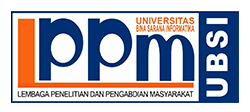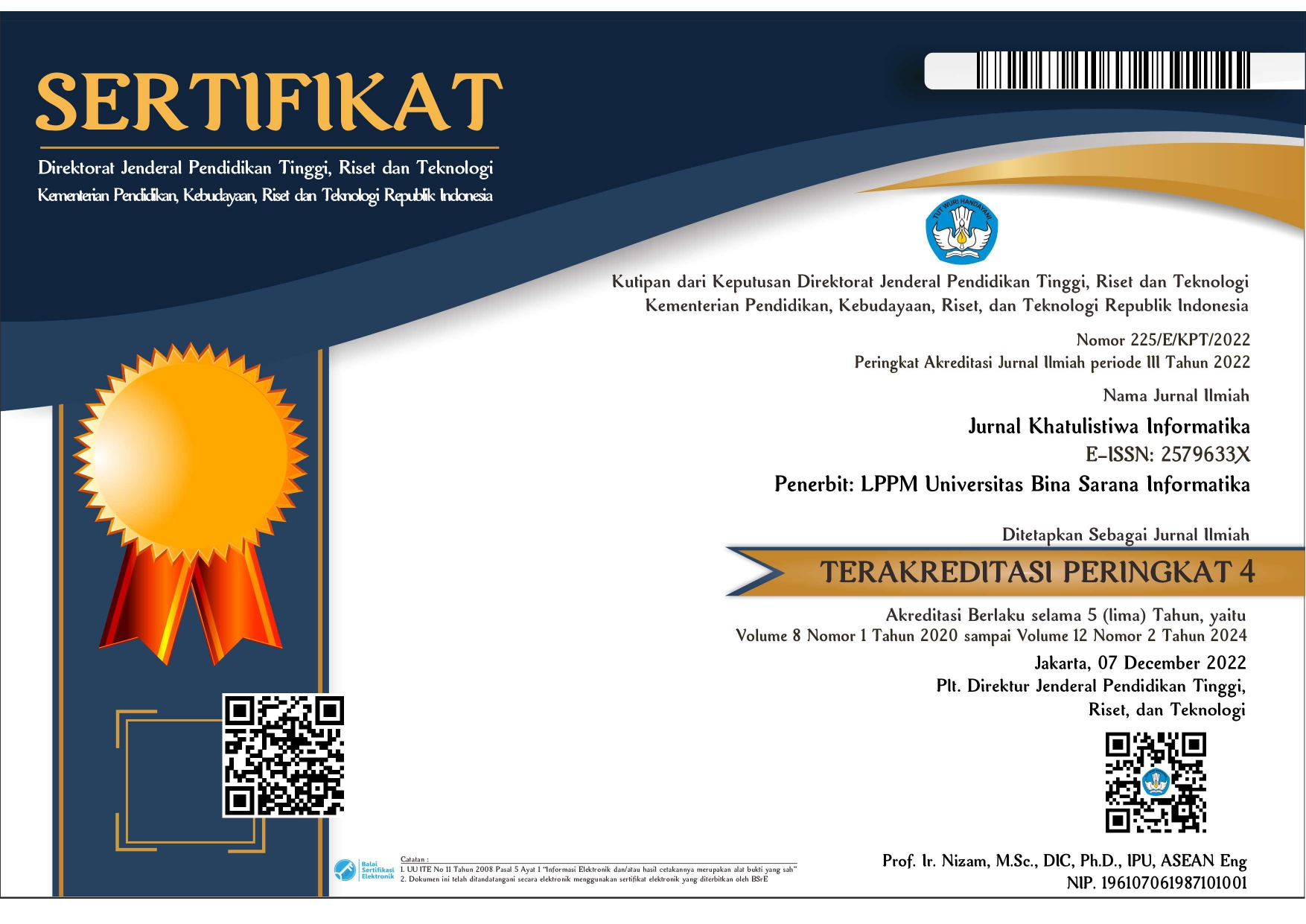Kajian Implementasi Pembelajaran Berbasis E-learning dengan Pendekatan Unified Theory of Acceptance and Use of Technology (UTAUT) (Studi Kasus pada SMP Al-Amanah, Kota Tangerang Selatan)
Sari
ABSTRACT
Electronic learning (e-learning) is educational process take information technology and communication sistimatically by integrating these components of learning, including the interaction of learning traffic space and time with kualitasi certifiable. E-learning do learning long-range used technology computer, computer network and / or internet or computer standalone. The use of technology expected to improve the will and the learning the students in particular smp students. Peggunaan technology and information system will go well if users accept and implement the technology well. One way to see how far influence the application of learning with pemanfatan e-learning is to use the model theory of acceptance and use of technology ( utaut ). With this model will can be seen how relations behavior in acceptance e-learning by the students dilingkungan smp al trustful south tangerang. Research result obtained a very significant relating to behavior users. It is of course can improve quality and the quality of learning in smp al trustful. And therefore can produce graduates more quality.
Keywords: e-Learning, Unified Theory of Acceptance and Use of Technology (UTAUT)Teks Lengkap:
PDF (English)Referensi
Al Awadhi, Suha, Anne Morris (2008).The Use Of The UTAUT Model In The Adoption Of E-Government Services In Kuwait
Daryansyah (2008). Konsep Belajar dalam Pendidikan Menengah. Makalah Simposium Pendidikan Nasiona. Depdiknas.
Effendi, Empy; Zhuang Hartono.(2005). “E-learning, Konsep dan Aplikasi”, Jakarta
Ghozali, Imam A. (2008). Model Persamaan Struktural–konsep dan aplikasi dengan program AMOS Ver16.0.Semarang: BP UNDIP.
Hair JF, Black WC., Babin BJ., Anderson RE., danTatham RL, 2006, Multivariate Data Analysis, Fifth Edition. New Jersey: Pearson Education International. Inc.
Hartley, Darin E (2001). Selling e-learning. American Society for Training and Development
Hasan, Iqbal (2008)Analisis Data Penelitian Dengan Statistik, Cetakan ketiga, Jakarta: Bumi Aksara
Indahyanti, Uce dan Arif Djunaidy (2013). Kajian Penerimaan Instruktur terhadap Teknologi Learning Management System dengan Menggunakan Model Unified Theory of Acceptance and Use of Technology (UTAUT): Jurnal Sistem Informasi Vol 4 No 4 Maret 2013. Institut Teknologi Sepuluh Nopember Surabaya
Jihad, Asep (2008). Evaluasi Pembelajaran. Multi Presindo: Jakarta.
Jogiyanto, HM. (2006). Analisa Desain Sistem Informasi:Pendekatan Terstruktur Teori dan Praktek Aplikasi Bisnis. Edisi ketiga,Cetakan kedua, Yogyakarta: Andi Offset.
Jogiyanto, HM. (2007). SistemInformasiKeperilakuan. Yogyakarta: Andi Offset
Laxman Pendit, Putu. (2007). Perpustakaan Digital Perspektif Perpustakaan Perguruan Tinggi Indonesia.Jakarta: Sagung Seto
McLeod, Raymond. (2004). Sistem Informasi Manajemen, Edisi Kedelapan, Jakarta: PT.Indeks.
Noviaristanti, Siska (2006), Model Penerimaan Sistem ERP (System Acceptance) Pada Fase Post Project (Studi Kasus Pada Salah Satu Perusahaan Telekomunikasi), Institute Teknologi Bandung,
Prasetyo, Basuki Hari dan Dian Anubhakti (2011). Kajian Penerimaan Sistem E-learning dengan Menggunakan Pendekatan UTAUT: Studi Kasus Fakultas Teknologi Informasi Universitas Budi Luhur. BIT Vol 8 No 2 September 2011
Santoso, Singgih. (2007). Structural Equation Modelling Konsep dan Aplikasi dengan AMOS Membuat dan Menganalisa Model SEM Menggunakan Program AMOS versi 7.0.Jakarta:Elex Media Komputindo
Satrio Wahono, Romi (2003). Menengok Proyek Digital Library. Artikel Populer Ilmu Komputer.com
Siahaan, Michael Sony dan Prabowo Pudjo Widodo (2010). Kajian Unified Theory of Acceptance and Use of Technology dalam Penggunaan Open Source Data Base Management System: Studi Kasus Universitas Indraprast. Jurnal Ilmiah Program Pascasarjana Magister Ilmu Komputer STIMIK Nusa Mandiri : Jakarta
Solimun. 2002. Multivariate Analysis: Structural Equation Modeling (SEM). Penerbit Universitas Negeri Malang
Subrata, Gatot (2009). Perpustakaan Digital. Pustakawan Perpustakaan UM
Sudjana, Nana (2004). Penilaian Hasil Proses Belajar Mengajar. Sinar Baru Algensia: Bandung.
Sugiyono (2010). Metode Penelitian Kualitatif dan Kuantitatif dan R & D. Alfabeta: Bandung.
Thomas, Patricia (2008). InformationSYstem Success And Technology Acceptance Within A Goverment Organization. Dissertation Prepared For The Degree Of Doctor Of Philosophy. University Of North Texas.
Tibenderana, Prisca K.G, Patrick J. Ogao (2006). Acceptance and Use Of Electronic Library Services in Uganda Universities. Diakses tanggal 16 Juli 2011.
Tibenderana, Prisca K.G, Patrick J. Ogao (2008). Information Communication Technologies Acceptance and Use Among University Communities in Uganda: A Model For Hybrid Library Services End-Users. International Journal of Computing and ICT Research.
Venkatesh, V, Davis, F. D. (2003). A Theoretical Extension of theTechnology Acceptance Model: Four Longitudinal Field Studies.Management Science.
Willis. J, Matthew, Omar F.El-Gayar, Dorine Bennet (2008). “Examining Healthcare Professionals Acceptance Of Electronic Medical Records Using UTAUT”. Issues in Information System Vol IX, No.20.
Wothke, W dan Arbuckle (1999). AMOS User Guide Version 4.00. Chicago.Small Water.
DOI: https://doi.org/10.31294/jki.v5i1.2270
DOI (PDF (English)): https://doi.org/10.31294/jki.v5i1.2270.g1585
##submission.copyrightStatement##


Dipublikasikan oleh LPPM Universitas Bina Sarana Informatika
Email : jurnalkhatulistiwainformatika@bsi.ac.id

This work is licensed under a Creative Commons Attribution-ShareAlike 4.0 International License







